This dialog box lets you specify the user name and password that will be associated to the Database Administrator. The Database Administrator User (DBA User):
- has the privileges to administrate the Database
- creates tablespaces (spaces for the data structures that will contain the data)
- is not necessarily a system user.
- Enter the user name and password of the database administrator.
This example uses the DB2 environment. In our example, we use the
db2adminuserid and password created by the default DB2 server installation: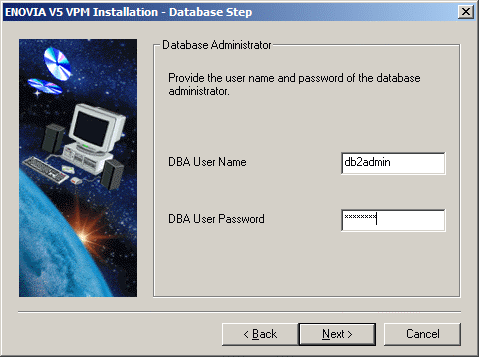
In the case of Oracle, use the Database Administrator user name and password created when installing Oracle on the workstation:
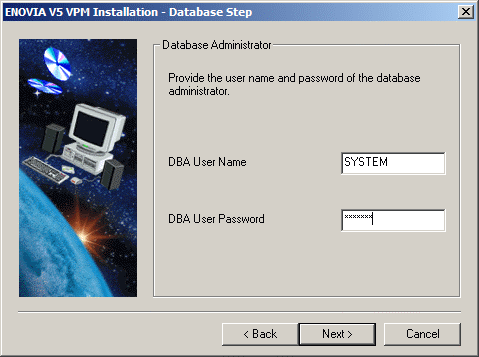
- Click the Next button to move to the next step.
The Tablespace Selection dialog box appears:
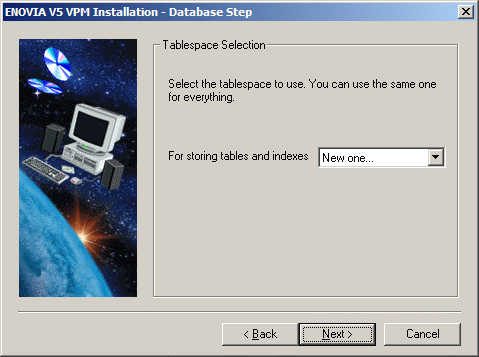
On DB2, because we did not create a tablespace when creating the database, the only option available is New one...
On Oracle, you can select either existing tablespaces or New One...
For the purposes of our scenario, let's create a new tablespace on both DB2 and Oracle, so select
New One...
- Click the Next button to move to the next step.
The New Tablespace Creation dialog box appears:
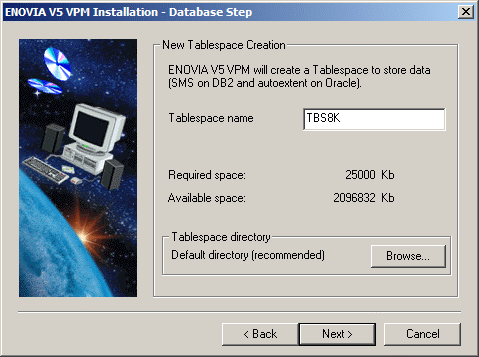
- Use the default tablespace name, or enter another name, then select
the tablespace directory if necessary.
All ENOVIA tables and indexes are created in one tablespace. A second tablespace is used for BLOB data.
Note, however, that the New One... option for creating new tablespaces does not appear if you are performing a Complete installation.
We recommend that you create new tablespaces: one for the storage of tables and indexes and one for the storage of BLOBs.
- Click the Next button to move to the next step.
On DB2 only, the Bufferpool Selection dialog box appears:
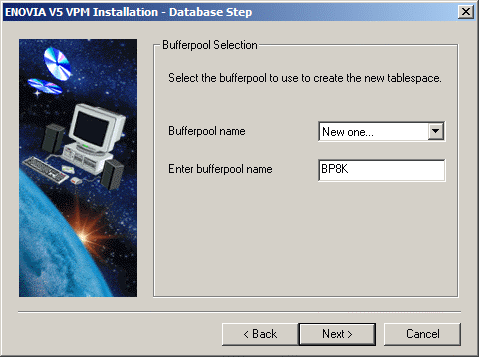
You can use the default name, or enter a new name.
- Click the Next button to move to the next step.
The DDL Customization Step dialog box appears, informing you that the software is compiling the DDL files:
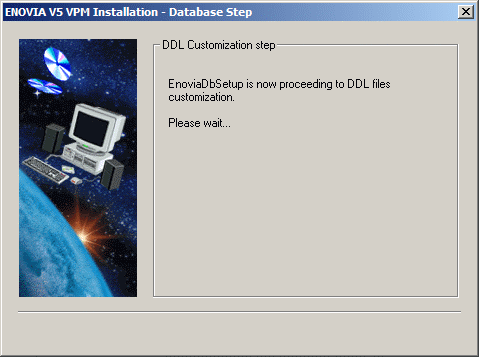
Once completed, a summary is displayed of the different installation options you have chosen.
For example, on DB2 it typically looks like this (in this example, the database is on a remote computer:
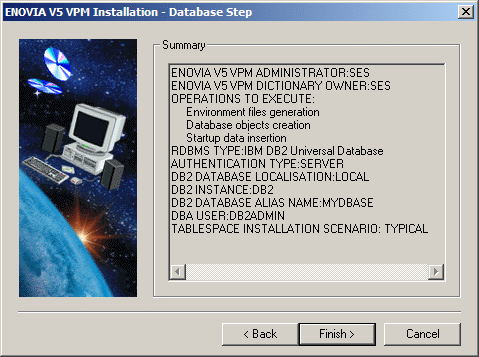
and on Oracle looks like this:
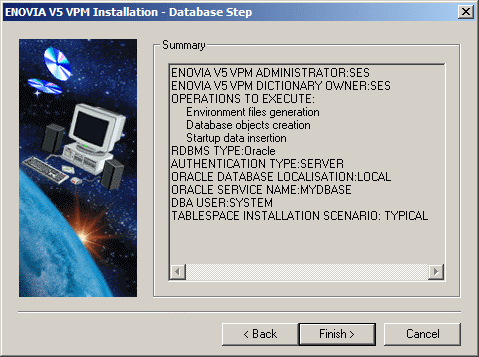
- Click the Finish button to execute the installation using the
database installation options listed in the summary.
At this point (on Oracle only), Oracle needs to create an Oracle user authorized to create the necessary tables in the database. The setup procedure proposes the creation of the same user name as the one you used at the start of the database setup procedure to create the ENOVIA V5 VPM Administrator. In our example, the name was "SES". Click Yes to continue.
- Click the Yes button to continue setting up the database.
Clicking No at this point aborts the database setup.
Depending on what type of existing tablespace you selected earlier (for example, USERS), you may be prompted to create the current userid in the database as follows:
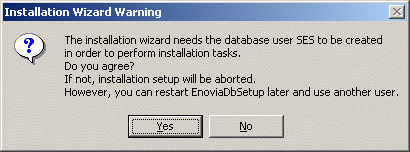
If so, click Yes to proceed.
The Report panel appears, indicating the actions that are being implemented as the installation progresses. The operations performed at this stage are determined by the options you checked in the Installation Execution dialog box. Installation progress is displayed using a progress bar:
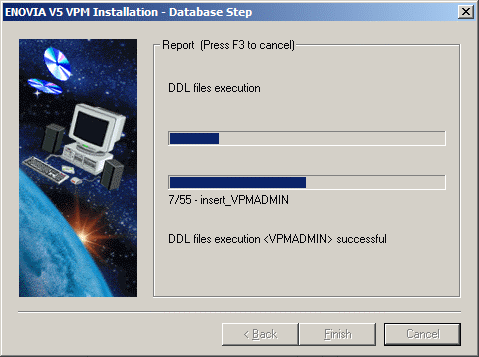
When the database setup has completed successfully, a message appears welcoming you to the world of ENOVIA V5 VPM:
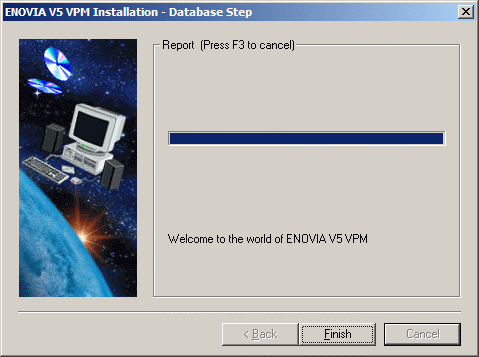
- Click the Finish button to finish the database setup phase of the installation, then refer to Finishing the Installation to terminate the installation.